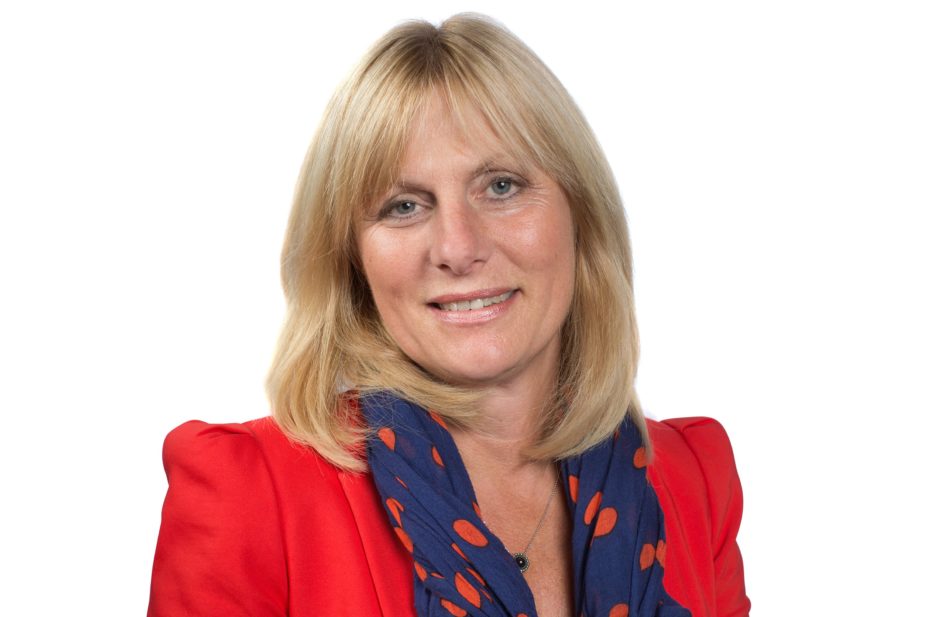
The National Institute for Health and Care Excellence (NICE) was set up by the government in 1999 to help ensure that people had equal access to treatments wherever they live in the UK.
It does this in two major ways: by appraising new drugs and treatments, and assessing whether they are cost-effective enough to be funded on the NHS — using so-called ‘quality adjusted life years’ (QALYs) as its yardstick — and issuing guidelines on the best evidence-based care for various conditions. However, both of these roles have been the subject of criticism.
Firstly, its technology appraisal process for new drugs was criticised for taking too long to complete assessments and provide recommendations on new drugs.
And, in recent months, some of its draft clinical guidelines have raised concerns. Earlier this year, experts spoke out saying they were “deeply concerned” over “confusing” terminology used in its draft guidance on the assessment and management of chronic pain.
The woman who has to navigate this minefield is Gillian Leng. A trained doctor, who has worked for NICE for almost 20 years, she was appointed as its chief executive at the beginning of April 2020, just as the nation entered its first COVID-19 lockdown.
Since then, the pandemic has meant a completely different way of working in some fields: running consultations in a matter of hours, rather than weeks, and producing brand new guidelines on COVID-19 at unprecedented speed. NICE has also launched a review into the way it assesses medicines.
The Pharmaceutical Journal set up a Zoom call with Leng to discuss NICE’s role and what lessons the organisation has taken away from the past year.
What triggered the review into changing the methods that NICE uses to develop guidance on medicines, medical devices and diagnostics?
The current model serves us well in many ways, but there were some drivers for the methods review, including bringing together the methods that we use for looking not just at drugs, but also medical technologies, devices and diagnostics. To date, they’ve all had somewhat different methods and, following a lot of discussion over the past few years, we felt we should bring all of that together.
The world keeps changing, so there are new things that we need to evaluate
The second thing is that we always have committed to a regular view of our methods and processes. The world keeps changing, so there are new things that we need to evaluate: genomic technology, digital devices, artificial intelligence, personalised medicine — all those things keep changing, and we need to make sure we keep what we do up to date.
There’s also a technical reason why we are doing our methods review — your readers might know about the voluntary scheme for branded medicines pricing and access. As part of that scheme, there was a formal commitment that we would review all of our methods.
Can you talk me through some of the changes that NICE are proposing?
Probably the most notable change to highlight are modifiers — these are things that change the emphasis that we place on the basic QALY assessment.
At the moment, there is a modifier that relates to end of life. So, if it’s a new drug for people who are at the end of life, or who have very limited life expectancy, we can increase that QALY range so that we can approve things that otherwise we wouldn’t have.
But, that’s the only modifier we’ve got and feedback suggests that that might not be the best thing to focus on. The proposal is that we might want to look at other things, such as the severity of the illness; you might have a really severe illness, that has an impact on your life, without it being end of life — that’s a really important conversation.
Another important area is how we handle uncertainty, and again, that’s a really important conversation because of the interest in speeding up access to medicines. But, it also relates to the work that the Medicines and Healthcare products Regulatory Agency (MHRA) are doing with their Innovation Passport; once they are the sovereign regulator, they have got a planned approach where there’s an Innovation Passport for designated drugs to speed up the approach to approving them.
Because it is earlier in the lifecycle that we look at things, the chances are that there won’t be the same degree of certainty about the evidence, and so there’s a balance between: do you restrict access to patients? Or do you allow access to patients while you are collecting more data? That’s the model that we have in the Cancer Drugs Fund.
Then, NHS England is looking at a new scheme called the Innovative Medicines Fund, and that will broaden out what we do for cancer drugs. So, it is very important that we have, in our methods, something that helps us deal with uncertainty.
And, of course, method isn’t just for drugs, it is for other technologies too. Often, when we look at medical technology and diagnostics, we find that they don’t come with the same level of evidence that a medicine does. So, I think there’s a need for us to be able to say, across the board, ‘This looks really promising, but it’s not proven; how can we manage this ongoing uncertainty with some ongoing data collection?’.
We’ve just established a new directorate, called the science, evidence and analytics directorate, to build capacity around using data, as opposed to using formal published research. We live in a data-rich environment and NICE needs to be able to be confident that the data that we look at is high quality, that any analysis anyone has done is high quality, and to be able to direct some of the work to set out data that we might need in the future to help it come back in an appropriate way.
Speaking of data, there was a lot of disappointment around the medical cannabis guideline, because of the weight that was given to randomised controlled trials, compared with the observational data. Should NICE consider more observational data when giving advice?
We need to make sure that we are clear about the quality of the data, and that it is robust and has been analysed appropriately
We need to consider data; however, we need to make sure that we are clear about the quality of the data, and that it is robust and has been analysed appropriately.
There’s a difference between routinely collected data, that’s systematic, from a whole range of patients, with decent numbers, compared with one or two case studies. There is a need to be able to say: if we’re going to look at data, it needs to be collected in this way, it needs to cover X number of patients, and it needs to have these outcomes, to help the wider system understand what good data looks like.
So not necessarily randomised controlled trials, but meeting certain specific criteria?
Yes.
Often there are the same data, but other guidelines some up with different conclusions, for example with the Global Initiative for Asthma and Scottish Intercollegiate Guidelines Network in the case of asthma. What would you suggest that a prescriber does in these cases?
The NICE guidelines follow the best approaches to development internationally and we aim to keep them up to date; although there might not have been a formal updated guideline launched, in the background we are reviewing the evidence and assessing whether that changes any of our recommendations.
However, I do recognise that it’s not helpful for people to see guidelines from NICE and guidelines from professional societies that are saying something different.
We try to work with our Scottish counterparts, the Scottish Intercollegiate Guidelines Network (SIGN), so that we don’t cover the same topics — it’s been good to work with SIGN on the guideline for long COVID, along with the Royal College of GPs, and that’s where we’re trying to go to avoid confusion: to partner with other organisations where we can.
Many patients are waiting too long for non-pharmacological alternatives for managing pain, but NICE keep on removing pharmacological options from the guidelines. How can this long-running problem be addressed?
I think it’s fair to say that the recommendation around withdrawing drugs has caused quite a bit of concern
The chronic pain guideline is still in draft; it’s due to be published in January 2021. I think it’s fair to say that the recommendation around withdrawing drugs has caused quite a bit of concern. I think we have to take some responsibility that the guideline was not clear in relation to the group affected by that recommendation.
There’s an overarching part of the guideline around chronic pain, and then there’s a specific bit around chronic primary pain, and that’s the group where we’ve said they don’t need to be offering things like paracetamol and NSAIDs. We’re not saying to people who have got arthritis or chronic pelvic pain that they shouldn’t be given any pain relief, that’s absolutely not the case. However, the group where there’s no obvious cause for the pain, they are the ones being recommended alternatives, such as cognitive behavioural therapy (CBT).
We are aware that there can be challenges accessing that, but increasingly, the digital offerings around CBT have been promoted and used quite successfully. The evidence does show that those are better options for people where they don’t have a diagnosis for their pain.
Concerns were expressed about advice on anticoagulants in the draft AF guideline, with some commenting that it was out of sync with NHS England guidance that all direct oral anticoagulants should be considered for the prevention of AF-related stroke. Why did that discrepancy happen?
I think the important point to note is that this is draft guidance, and it was based on an economic model of the direct oral anticoagulants at the time of consultation. However, NHS England is carrying out an ongoing procurement exercise. When we finalise the guidelines, we will be looking at our economic model, potentially with different prices as a result of that procurement exercise. We did wonder whether we should delay; however, there was other important information in the guideline that we needed to get comment on.
There’s been a lot of reflection around what the COVID-19 pandemic has taught us — what has NICE taken away from it?
It’s been quite a strain for lots of us, but it’s also been an opportunity. Internally, we’ve learnt a lot about working virtually and working remotely; transferring all of our committees to a virtual platform almost happened overnight.
We’ve also learnt about putting advice to the system quickly. It was good to be able to support the early days of the pandemic by producing guidelines on a range of topics relevant to people with COVID-19; we normally take two years to develop a guideline and suddenly we were developing guidelines in a week. So, that clearly meant that we weren’t following all the standard approaches.
In relation to, say, evidence synthesis, there wasn’t much evidence, it was all new. So that helped, but we did have to make sure we were talking to experts. We didn’t put together a formal committee; again, there wasn’t time, but we identified a panel of people. We didn’t do six weekly consultations, but we did run very short consultations — I think around three hours. It was remarkable.
I think one of the things to take away from the pandemic was the huge sense of collaboration
I think one of the things to take away from the pandemic was the huge sense of collaboration. I’ve talked about the work we’ve done with SIGN, but we’ve got links with other international health technology assessment bodies and other guideline developers, and bringing together any data or evidence was really important.
We also set up Rapid C-19 — a collaboration of NICE, MHRA, NHS England, and the National Institute for Health Research to keep track of the pipeline of potential products for treating COVID-19. That pipeline helped us identify dexamethasone, hydrocortisone and remdesivir, so that they could go through the MHRA process quickly.
Alongside all the work around the pandemic, we’ve been developing a new strategy. In April 2021, we hope to publish a new strategic plan, which will very much build on the work that we’ve done, but also set a new direction around how we work.
It will involve things like dynamic living guidelines, and world-leading methods of technology and investment, including looking at digital products.


